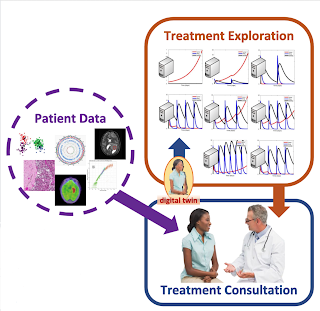A different kind of March Madness!
This was the trending joke at HIMSS’18 in Vegas this March.
An interesting tweet captured all the exercise attendees got while at HIMSS’18 – 382 miles walked (we basically walked from Durham to Atlanta), 737,713 steps traversed (climbed the empire state building 3 times), 255 floors climbed (ran 15 marathons), all just in 5 days at the beautiful Venetian.
The excitement was palpable both live and in cyber space. An undercurrent of machine learning (ML) and Artificial Intelligence (AI) was prominent in all forums and education sessions. I jotted down a few key lessons and takeaways:
- Data engineering is equally important or maybe more important than downstream modeling and algorithms. If taking on large AI projects, be prepared to invest resources in “data janitorial activities” to extract, clean, standardize and prepare data for analysis.
- No “black boxes”. If you want your tool to be used, it has to be transparent. Invest time in demystifying the algorithms to users and help them adopt it by making the tooling part of their routine workflow helping clinical teams adopt the tools.
- AI is a “consult”; it is “augmenting” human intelligence, helping docs keep up with all the new research and guidance that come out every year. “AI will not replace humans but humans who use AI will replace those who don’t”
- Technology is not a magic bullet, not a cure-all; it is just like any quality improvement tool or a statistical algorithm we use routinely.
- Interoperability is key. FHIR has potential as a next-gen standards framework for healthcare data exchange. Google, Apple and IBM are all working to integrate FHIR into their product roadmaps.
- There is a lot of hype in the AI/ML space, a lot of vendors and a lot of buyers; As academic data scientists, we have the power to act as unbiased 3rd party and call “fake news” when we see it.
Our own Adil Alaoui shared his notes from the opening keynote. Eric Schmidt former Google CEO emphasized how Artificial AI, Machine learning (ML) and the Cloud are fueling moonshots that are already changing how intelligent systems provide insights to predict and fight disease and improve health for millions of people. Healthcare is being transformed entirely, with each new technological breakthrough and the industry should adopt and adapt the fast-changing ecosystem. “Get to the cloud. Run to the cloud,” and added “Don't stop, don't walk, don't think about it.”
Adil notes, “..as we develop the Georgetown ICBI Data Science platform, we have many opportunities to put to good use what we learned at HIMSS’18 in support of our healthcare and biomedical research collaborations.”
Pete Celano from MedStar, our health partner, had a call for action to bring prompt care to patients prominently displayed at the HIMSS exhibit hall. On the theme of patient as the focal point in healthcare, “I am really happy to see the ECRI institute gaining traction at HIMSS as the hub for patient safety in EHRs with support from the Bipartisan Policy Center, The Pew Charitable Trust, and the Moore Foundation”, said Raj Ratwani, Scientific Director, National Center for Human Factors in Healthcare.
As though the geekiness and excitement at HIMSS’18 were not enough, the AMIA Informatics Summit in San Francisco brought together a vibrant and diverse community of ambitious informatics scientists who are changing the research and practice of medicine this March. As Nick Tatonetti, Chair, Translational Bioinformatics notes “it was clear at this year’s Summit that ML, AI and other data science methods are shaping the future of informatics. What was also clear was that these methods need to be considered and evaluated critically before they are ready for use in medical practice”
Podium presentations and panels discussed a variety of important topics including “Moving Genomics into the Clinic”, “Center for Data to Health”, “World’s experience with ICD-10”, “When playing with FHIR”, Blockchain for secure patient data, and “All of Us”.
Thrilled to see our own Matt McCoy’s paper on computational modeling of ALK variants to understand resistance to ALK inhibitors win the Marco Ramoni Distinguished paper award.
AMIA Informatics Summits are never complete without year-in-reviews and crystal ball predictions in translational and clinical informatics from Russ Altman and Peter Embi.
To round out the March Madness, I had the great honor of discussing biggest predictors of health outcomes, life expectancy by state, extracting signal from sensors and other developments in data science & precision health at the “Data Scientist will see you now” session at SXSW with Kevin Vigilante of Booz Allen and Robert Califf of Verily Life Sciences who served as the 22nd FDA Commissioner under President Obama. I am deeply humbled by our leaders who are down-to-earth and are always willing to engage in a dialog to improve status quo in our healthcare system. You can watch the full video of our session here.
We live in exciting and transformational times for health data science and technology innovation. How are we going to power our local health, technology and life sciences ecosystems with these developments?
Good news is that with health data science, we can predict a winning bracket with odds better than one in 9.2 quintillion!




Comments
Post a Comment